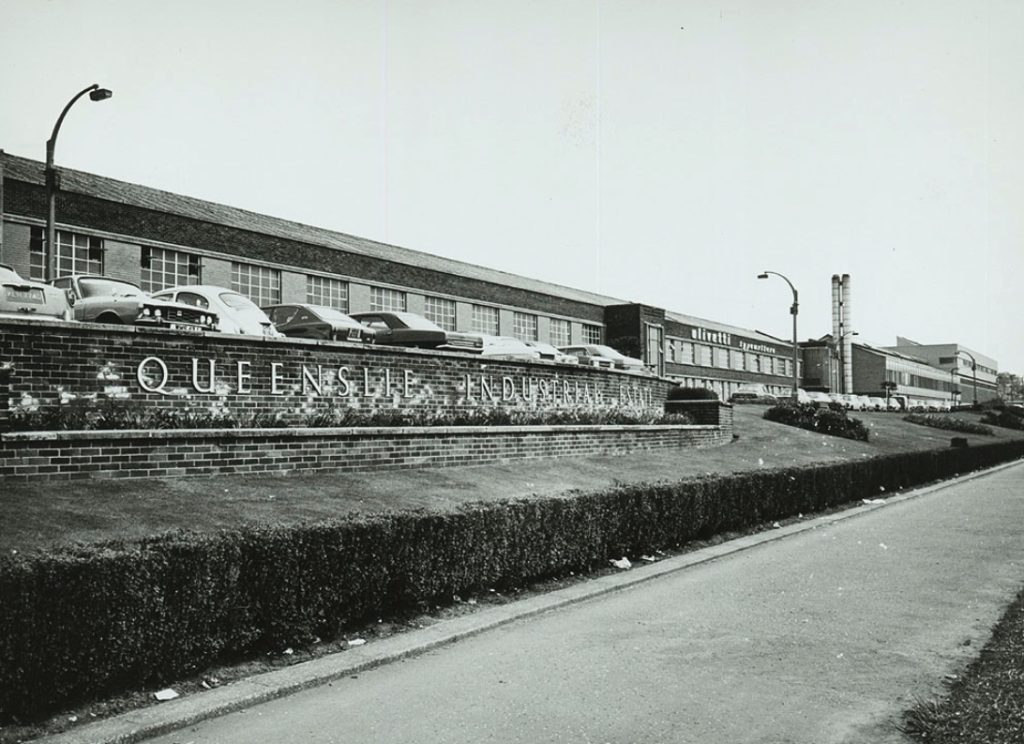In the years following the Second World War, in an attempt to reduce Scotland’s economic dependence on heavy industry, a number of industrial estates with ready-made factories for light industry were built by the Scottish Industrial Estates Corporation.

Queenslie in Glasgow (opened in 1948) was one the largest. Initially it was somewhat isolated, but the new large Easterhouse housing development (and smaller schemes such as Cranhill) soon attracted a large labour force to the area.
By 1956, twenty-three firms were turning out a variety of products including typewriters, miners’ safety lamps, ladies wear, car springs and gas meters. Olivetti’s typewriter factory was the largest at Queenslie, with a male workforce of 900. Most of the typewriters’ components were manufactured on the premises and 40 per cent of output was exported.
Equally important for the female populace was the clothing manufacturer C & A Brenninkmeijer. The company was founded by Dutch brothers Clemens and August Brenninkmeije, and took its name from their initials – “C & A” – and known locally as ‘The Canda’).
For many years, C & A retail clothing stores were a major presence on high streets throughout the UK . In the 1970s It was a popular destination for school clothes. Its ‘Man at C&A’ label turned out fashionable suits and its womenswear department blouses shirts, skirts and coats. The company ceased trading in Britain in 2001 though still operates successfully on the continent.
Nearby Carntyne Estate, though smaller than Queenslie, attracted an equally wide variety of companies, including West of Scotland Wringers, Caledonian Tractor Company and Clanross Knitwear.

Clanross Knitwear may serendipitously provide a tangible link between Cranhill Secondary School and Carntyne Industrial Estate. Before the War, Carntyne had marked the limit of Glasgow’s eastward expansion. Beyond, and before Cranhill’s creation was mainly open farm land.
Cranhill Secondary attracted a pool of creative, commercially-successful artists – including Glen Scouller and George Birrell. Other talented staff members were Joe Crawford, Cathy Harold, Ronnie Smith and Jim McNaught.
I worked in the school’s geography department.
Recently, my son bought a house and consequently inherited some interesting artwork. Two pieces of which were signed ‘J McNaught’
Research suggests that his ‘McNaughts’ may have been commissioned by Campsie Knitwear of Carntyne Industrial Estate a less well-known, but no less-important company than Queenslie’s ‘Canda’ ; and successor to Clanross Knitwear.
The accumulating evidence suggests that that the talent behind my son’s paintings may have been the Jim McNaught who taught at Cranhill.
Any thoughts or confirmatory information more than welcomed.
